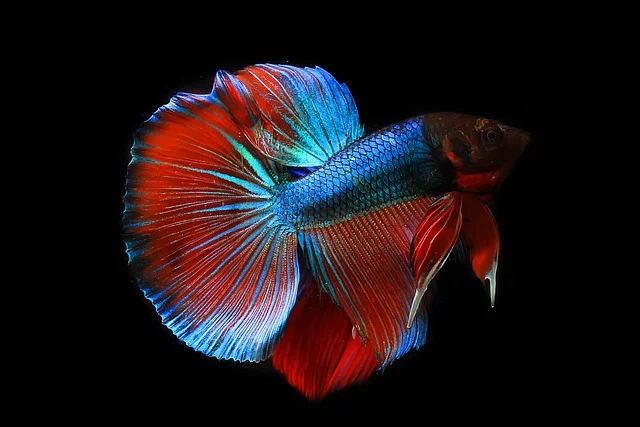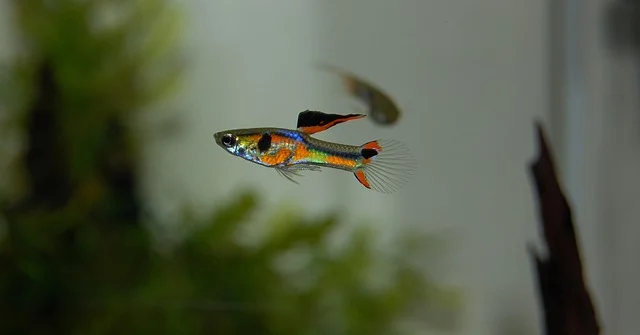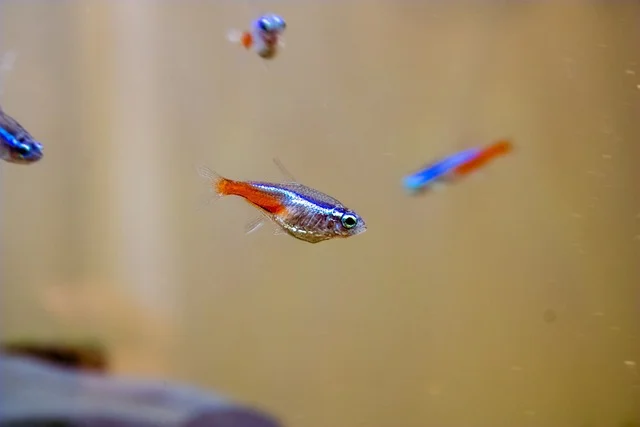Many people love aquariums for the beauty and calm they bring. Let’s explore the world of colorful fish, get to know what makes each of them special, and find out how to take care of them. We can also learn about breeding them. These Aquarium fishes are like living art, adding vibrant colors and graceful movements to our homes. They create an atmosphere of serenity, captivating both young and old alike. Meet the stunning Betta fish with its fancy fins and the graceful Angelfish that glides through the water. These aquarium wonders add beauty to our homes.
Characteristics of Popular Aquarium Fishes
When selecting fish for your aquarium, it’s important to consider their characteristics and compatibility.
| Fish | Size | Temperament | Lifespan |
|---|---|---|---|
| Betta Fish | Small | 2-3 years | |
| Angelfish | Medium | Semi-aggressive | 10+ years |
| Guppy | Small | Peaceful | 2-3 years |
| Neon Tetra | Small | Peaceful | 5-10 years |
| Goldfish | Small | Social | 10-20 years |
Here are some popular choices:
Betta Fish: The Jewel of Aquaria

Betta fish, also known as Siamese fighting fish, are renowned for their vibrant colors and flowing fins. They are relatively easy to care for and can thrive in small aquariums. However, it’s essential to keep male Betta fish separate to prevent aggression.
Angelfish – Elegance in Motion

Angelfish are known for their majestic appearance and graceful swimming. They come in various color variations and can grow quite large. It’s advisable to keep angelfish in pairs or groups, providing them with ample swimming space.
Guppy: The Colorful Community Fish

Guppies are popular for their striking colors and active nature. They are highly adaptable and can live peacefully with other fish species. Guppies are prolific breeders, making them a fascinating addition to any aquarium.
Neon Tetra: A Shimmering School

Neon Tetras are small, peaceful fish known for their vibrant blue and red colors. They are social creatures and should be kept in groups of at least six individuals. Neon Tetras prefer dimly lit aquariums with plenty of vegetation.
Goldfish: Classic Beauty

Goldfish are one of the most recognizable and widely kept aquarium fish. They come in various shapes and sizes, adding a touch of elegance to any aquarium. Goldfish require ample space and proper filtration due to their high waste production.
Setting Up the Ideal Aquarium
Creating a suitable environment for your aquarium fish is crucial for their well-being. Here are a few key considerations:
Aquarium Size and Equipment: The size of your aquarium will depend on the fish species you choose. Research the specific requirements of each species and provide an adequately sized tank. Essential equipment includes a filter, heater (if necessary), lighting, and a thermometer.
Water Conditions: Maintaining optimal water conditions is essential. Monitor and regulate temperature, pH levels, and water hardness. Regular water changes and the use of dechlorinating agents are vital to maintaining a healthy aquatic environment.
Aquascaping: Aquascaping involves creating an aesthetically pleasing underwater landscape. Use plants, rocks, driftwood, and other decorations to mimic natural habitats and provide hiding spots for the fish.
Essential Care Guidelines for Aquarium Fishes
Proper care is vital to ensuring the health and longevity of your aquarium fish. Here are some essential care guidelines:
Water Quality and Maintenance: Monitor water parameters regularly and conduct routine water changes to maintain optimal conditions. Use a water testing kit to check ammonia, nitrite, nitrate, and pH levels. Clean the tank and equipment regularly to prevent the buildup of harmful substances.
Feeding Routine: Provide a balanced diet suitable for the specific dietary needs of your fish species. Feed them high-quality commercial fish food and supplement their diet with occasional treats like frozen or live foods. Avoid overfeeding, as it can lead to health issues and water pollution.
Regular Observation: Observe your fish daily for any signs of stress, disease, or aggression. Early detection of problems allows for timely intervention and treatment.
Feeding Your Aquarium Fishes
A nutritious and balanced diet is crucial for the overall well-being of your aquarium fish. Here are some key points to consider:
Understanding Dietary Requirements: Different fish species have varying dietary needs. Some are herbivores, while others are carnivores or omnivores. Research the specific requirements of your fish and provide a diet that meets their nutritional needs.
Commercial Fish Foods: High-quality commercial fish foods are readily available and provide a convenient option for feeding your aquarium fishes. Look for fish foods that contain essential nutrients, vitamins, and minerals.
Supplementary Foods: Supplement your fish’s diet with occasional treats like frozen or live foods. Brine shrimp, bloodworms, and daphnia are popular options that provide additional nutrition and variety.
Creating a Harmonious Community Tank
Many aquarium enthusiasts enjoy creating a community tank where multiple fish species coexist peacefully. Here’s how to achieve a harmonious community tank:
Compatibility Considerations: Research the compatibility of different fish species before introducing them to the same tank. Some fish are territorial or aggressive, while others are peaceful. Consider factors like size, temperament, and preferred water conditions.
Balancing the Ecosystem: Create a balanced ecosystem by incorporating fish with different feeding habits. This helps prevent competition for food and reduces aggression among tank inhabitants.
Provide Hiding Spots: Adding plants, rocks, and decorations provides hiding spots and territories for the fish. This reduces stress and promotes a sense of security within the community.
Disease Prevention and Treatment
Keeping your aquarium fish healthy involves disease prevention and timely treatment. Here are some guidelines:
Quarantine New Additions: Always quarantine new fish before introducing them to your main tank. This helps prevent the spread of diseases to the existing fish population.
Maintain Water Quality: Poor water quality can weaken fish’s immune systems, making them more susceptible to diseases. Ensure proper filtration, regular water changes, and optimal water parameters to reduce the risk of infections.
Observe Behavioral Changes: Keep a close eye on your fish’s behavior and appearance. Look for signs of stress, abnormal swimming patterns, loss of appetite, or physical abnormalities. Prompt action and suitable treatment can prevent the spread of diseases.
Breeding Aquarium Fishes: A Delightful Challenge
Breeding aquarium fish can be a rewarding experience. Here are some key considerations:
Research and preparation: Before attempting to breed fish, research the specific requirements of the species you wish to breed. Learn about their breeding behaviors, environmental needs, and compatibility with potential mates.
Separate Breeding Tank: Set up a separate breeding tank to provide a controlled environment for the breeding process. Equip the tank with appropriate nesting or spawning materials and maintain optimal water conditions.
Observing Breeding Behavior: Observe the fish closely for signs of courtship, mating, and egg-laying. Each species has unique behaviors and requirements for successful breeding.
Rearing Fry: Once the eggs hatch, provide suitable food for the fry and protect them from adult fish. Proper nutrition and a safe environment are essential for their survival and growth.
Conclusion
Aquariums offer a fascinating glimpse into the captivating world of aquatic life. By choosing popular aquarium fish with unique characteristics, providing appropriate care, and exploring the art of breeding, you can create a thriving underwater ecosystem in your own home. Remember to consider the specific needs of each fish species and enjoy the beauty and serenity they bring to your life.
Frequently Asked Questions (FAQs)
-
Can I keep different fish species together in the same aquarium?
It depends on the compatibility of the species. Research their behaviors, sizes, and preferred water conditions before mixing them.
-
How often should I feed my aquarium fish?
Feed them small portions two to three times a day, depending on their dietary requirements. Avoid overfeeding.
-
How can I prevent diseases in my aquarium fish?
Maintain proper water quality, quarantine new additions, and observe their behavior regularly. Early detection and treatment are crucial.
-
Can I breed aquarium fish in a community tank?
It’s generally recommended to set up a separate breeding tank to provide optimal conditions for successful breeding.
-
What is the ideal temperature for most aquarium fish?
The ideal temperature varies depending on the fish species. Research their specific requirements and maintain a suitable temperature range.




